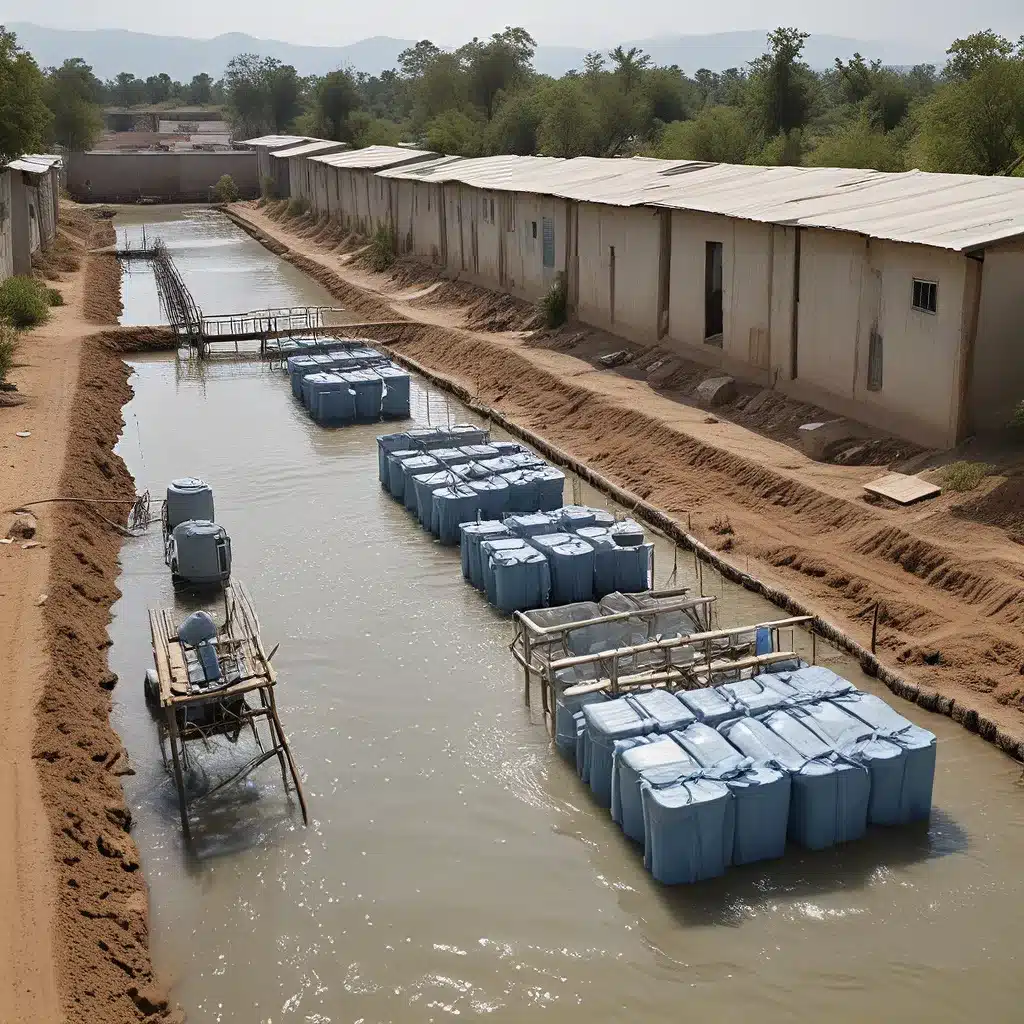
As an environmental enthusiast and passionate advocate for sustainable water solutions, I’ve been captivated by the remarkable advancements in water treatment technologies that are revolutionizing how we fortify our communities against the growing threats of natural disasters. It’s an exhilarating frontier where cutting-edge innovations are converging with nature-based approaches to safeguard our precious water resources and protect vulnerable populations.
Embracing the Power of Nature
One of the most inspiring developments in this fluid landscape is the burgeoning field of natural and nature-based features (NNBF) for coastal resilience. These ingenious solutions harness the inherent strength and adaptability of natural ecosystems to shield communities from the devastating impacts of storms, sea-level rise, and other climate-driven calamities.
Let’s dive into a few remarkable case studies that showcase the transformative potential of NNBF:
Living Breakwaters in New York Harbor
Imagine a series of strategically placed, ecologically enhanced breakwaters that not only shield Staten Island’s shoreline from erosion and wave damage, but also create vibrant new marine habitats. That’s precisely what the Living Breakwaters project aims to achieve in New York Harbor. By integrating risk reduction, ecological restoration, and social resilience, this innovative endeavor is redefining coastal protection.
Extensive computational modeling and physical testing have been crucial in optimizing the breakwater designs, ensuring they effectively attenuate waves while also fostering diverse aquatic life. From textured surfaces that promote oyster recruitment to the strategic placement of “reef streets,” every element of this project has been meticulously crafted to enhance the harbor’s natural systems.
Coastal Texas Protection and Restoration
Stretching across the entire Texas Gulf Coast, the Coastal Texas Protection and Restoration Feasibility Study is a grand-scale initiative that embraces a “multiple lines of defense” approach. By combining structural, nature-based, and non-structural features, this comprehensive plan aims to safeguard communities, industries, and critical ecosystems from the ravages of coastal storms and rising seas.
From restored marshes and oyster reefs to reinforced dunes and a gated surge barrier, this project exemplifies the power of integrating diverse resilience strategies. Crucially, the design process has been shaped by extensive stakeholder engagement, ensuring the final plan reflects the unique needs and priorities of the local communities.
South Bay Salt Pond Restoration in San Francisco
Across the country in California, the South Bay Salt Pond Restoration Project stands as a shining example of how adaptive management and regional collaboration can drive successful coastal resilience initiatives. This ambitious effort is transforming former salt ponds back into thriving tidal marshes, enhancing flood protection while also restoring critical habitat.
The project’s adaptive management approach allows it to evolve and respond to the changing environmental conditions, while the regional Wetlands Regional Monitoring Program ensures the lessons learned are shared and applied across the San Francisco Bay Area. By embracing a collaborative, ecosystem-based approach, this project is setting a new standard for resilient coastal management.
Overcoming Challenges, Fostering Innovation
As inspiring as these projects are, the path to implementation has not been without its obstacles. Navigating the complex web of regulations, funding sources, and stakeholder interests requires a level of nuance and perseverance that would test even the most seasoned coastal engineers and planners.
One of the primary challenges lies in the inherent uncertainties surrounding NNBF projects. Unlike traditional gray infrastructure, these nature-based solutions often rely on dynamic, living systems that can be difficult to predict and quantify. Rigorous modeling, extensive monitoring, and a willingness to adapt are essential to overcome these knowledge gaps.
Securing sustainable funding, both for the initial construction and the ongoing maintenance, is another persistent hurdle. As Inland Waters, Inc. and other water treatment experts know all too well, the availability of resources can often make or break a project’s success. Innovative financing mechanisms, such as public-private partnerships and resilience-focused bond measures, are helping to bridge this gap.
Perhaps the most critical factor, however, is the active engagement and support of local communities. By prioritizing stakeholder input and co-creating resilience solutions, project teams are overcoming the legacies of top-down, externally designed approaches that have too often failed to meet the unique needs of vulnerable populations.
A Future of Fluid Resilience
As we confront the sobering realities of climate change and the increasing frequency of natural disasters, the imperative to fortify our communities has never been more pressing. Yet, in the face of these daunting challenges, I’m heartened by the visionary thinking and collaborative spirit driving the water treatment and coastal resilience sectors.
The projects I’ve explored are not mere experiments – they are beacons of hope, demonstrating that by harnessing the power of nature, embracing innovation, and empowering local communities, we can create a future of fluid resilience. These are the fluid frontiers that will safeguard our precious water resources, protect vulnerable populations, and ensure that our communities can withstand even the most formidable natural calamities.
The road ahead may be filled with complexities and uncertainties, but with determined pioneers leading the way, I’m confident that we can navigate these uncharted waters and emerge stronger, more resilient, and better prepared to face the challenges of a changing world. After all, as the saying goes, “When the going gets tough, the tough get going” – and in this case, the tough are the innovators, collaborators, and advocates who are redefining the future of water treatment and coastal resilience.


